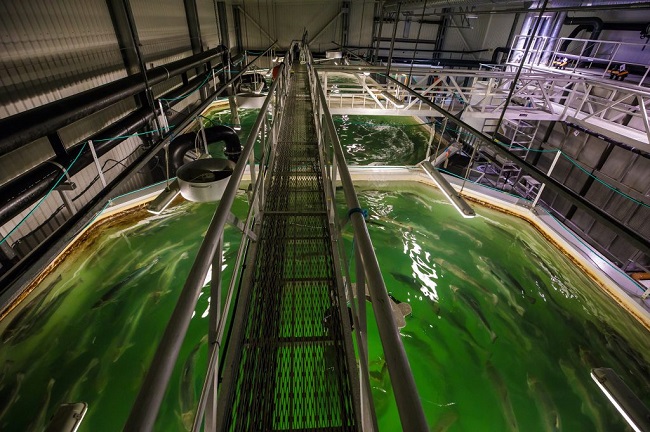
News
disease management
Research
Norway, North America RAS farms differ in disinfecting strategies: survey
March 19, 2021 By Nestor Arellano
 (Image from; Nofima)
(Image from; Nofima) Research into how land-based fish farms disinfect their recirculating aquaculture systems (RAS) has revealed that facilities in Norway go about the practice differently compared to their North American counterparts.
The study was conducted by fisheries and aquaculture body Nofima AS, which looked into the disinfecting practices at 25 RAS facilities in Norway, the United States, and Canada. The researchers hope their findings can be used to create new standards to increase effectiveness and prevent outbreaks of disease.
Nofima scientist Carlo C. Lazado and Chris Good of The Conservation Fund’s Freshwater Institute recently released the scientific publication, “Survey findings of disinfection strategies at selected Norwegian and North American land-based RAS facilities: A comparative insight.”
Approximately 40 per cent of Norwegian respondents said they disinfect tanks and pipes after each production cycle, while 60 per cent of North American respondents do the same.
The period of contact with the disinfectant varies between 12 and 24 hours at the Norwegian facilities. There are greater variations in North America. The period of contact in North America is from 1 to 24 hours.
“Greater variation in the period of contact may indicate that they have more structured strategies, and somewhat more experience regarding the effect of disinfection,” Lazado said. “This is reflected in the fact that most facilities in North America have longer operating time compared to the Norwegian ones.”
The survey also found that the majority of Norwegian respondents, and more than 90 per cent of the North American respondents, follow the manufacturer’s recommendations for use of disinfecting equipment and products.
However, the survey also revealed that “many people are not aware of how effective the disinfectant is for their RAS facility”, according to Lazado.
The researchers also found that while all the facilities have their own safety procedures, “there is no overview of how these procedures are practiced and managed.”
Print this page